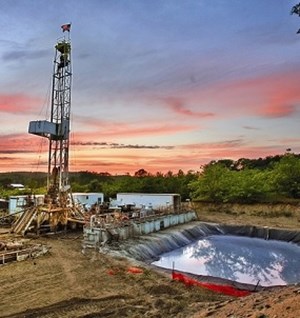SPE Hydraulic Fracturing Technology Conference showcases new technologies and fracing techniques
SPE’s Hydraulic Fracturing Technology Conference and Exhibition (HFTC) was held Jan. 31—Feb. 2 at the Woodlands Waterway Marriott Hotel and Convention Center in the Woodlands, Texas. The conference focused on sharing details of the latest advances in subsurface diagnostics, proppant performance and modeling.
During the technical sessions, operators and service providers displayed existing and new hydraulic fracturing technologies, using experiences from fracture-stimulated wells and the application of global learnings. Authors also discussed improvements in fracture treatment designs, completion technologies and well placement strategies. Case histories from fracturing operations, technology trials and field development optimization in conventional and unconventional formations were also presented.
PLENARY SESSION
The three-day event, which had a paid attendance of 2,500 people, started with the Steve Holditch Plenary Session that focused on issues central to the unconventional business. This year’s plenary session highlighted key technical developments resulting from several industry field experiments. It included details about the ongoing collaborations with the Hydraulic Fracturing Test Sites and other large-scale programs.
Before the technical portion of the plenary session, HFTC Conference Chairman Dr. Jennifer Miskimins, professor and head of the Petroleum Engineering Department at Colorado School of Mines, presented the 2023 SPE Legends of Hydraulic Fracturing Award to professors John Lee of Texas A&M University and Mohamed Soliman of the University of Houston.
Dr. Lee has 50 years of experience in petroleum engineering and is renowned for his work in reservoir engineering for hydraulically fractured wells along with integrated reservoir studies and unconventional gas development.
Dr. Soliman is the chairman of the Petroleum Engineering Department at the University of Houston. His career has been distinguished by the extensive study of hydraulic fracturing diagnostics, data analysis and modeling. Dr. Soliman has authored 250 technical papers and holds 40 U.S. patents. He is currently working on waterless fracturing techniques using plasma.
Key findings and applications from world class underground laboratories. The technical portion of the plenary session, moderated by Chris Wright, Liberty Energy, featured four presentations by seven different subject matter experts. Technical leaders with SM Energy, Devon Energy and Hess Corp. led the discussion and shared the benefits realized from their ongoing R&D work at their underground laboratories.
SM Energy. The initial talk was given by Erich Kerr and Mary Ellen Lutey from SM Energy. Kerr started his presentation showing that the cost of drilling and completing horizontal shale wells has dropped by 50% over the last 10 years, due to increased efficiencies, mainly on the drilling side of the equation. Kerr then presented results from SM Energy’s fracture propagation tests. The research uses fiber optics to observe and measure fracture arrival versus fracture relaxation. The study suggests that fractures can continue to close (or relax) for between 3 hrs and 9 hrs after treatment.
Next, Lutey presented the benefits of SM Energy’s work by outlining the mechanics captured by the fracture study: 1) stress tensor; 2) strain decay; 3) fracture orientation; and 4) poro-elastic behavior. Lutey concluded, saying their diagnostic and modeling work is key to developing intelligent decisions. The subsurface learning can be applied to multiple basins, and this type of technical expertise drives optimization while mitigating risk.
Devon Energy. The second presentation was given by Kourtney Brinkley and Aaron Ketter from Devon Energy. In the technical portion of the presentation, Brinkley reported that her company is striving to increase reserve recovery in Dewitt County, Texas, with new re-fracturing techniques. The study started with the analysis of multiple core samples from shale reservoirs to determine the effectiveness of the fracturing process. From that study, geoscientists concluded that the completions in parent wells were suboptimal. Reservoir formations in the core samples showed inconsistent proppant placement and closed fractures. By using fiber optic technology, Devon determined that their re-fracing process was successfully contacting new rock and creating new fractures in previously unproduced reservoir formations.
Next, Kettler presented the business case research that documented inefficient initial completions in ongoing work at Devon’s Eagle Ford assets. The company believed there was much room for improvement. He stated that the re-fracs have been successful and are producing significant improvement in output while increasing recoverable reserves by 15%-20%.
Hess Corporation. The third presentation was given by Craig Cipolla and Robert Fast from Hess Corp. Cipolla used his company’s lengthy R&D work at its Bakken shale asset to give an overview of the processes and learnings derived over the last several years. The company has used numerous technologies to fully understand fracture geometry and the parent/child well relationship. Hess has implemented fiber optic measurements to understand reservoir drainage, fracture conductivity and how to improve overall recovery.
Fervo Energy. The final presentation was given by Jack Norbeck, Fervo Energy, who outlined how his company is using extended-reach horizontal drilling and staged fracturing techniques to develop commercial geothermal energy in northern Nevada. Norbeck said the wells are being drilled through granite and other highly competent igneous rocks to pump water down into the subsurface, to harvest heat generated at depth in the region. The difficult and complex drilling environment is exacerbated by the large 9 7/8-in. hole section required to set 7-in. casing in the wellbore at temperatures between 375° and 425° F.
Other operators shared technical insights at the conference including Apache Corp, BP, Chevron, ConocoPhillips, Liberty Resources, Ovintiv, Petroleum Development Oman, Saudi Aramco and Shell.



